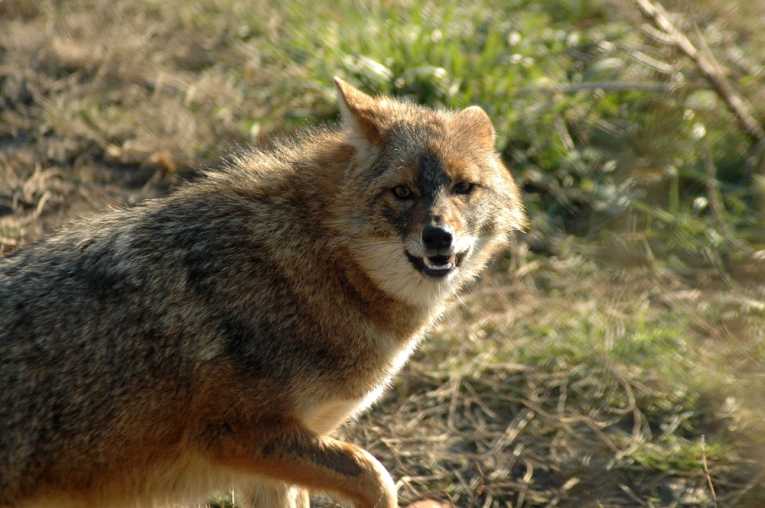The Egyptian jackal has been recognised as a large and rare subspecies of the golden jackal, though even the great Victorian, Thomas Huxley, thought the skull resembled the grey wolf. With all of the useful advances in genetics it was possible to assign it to the wolf species (Canis lupus) instead of the golden Jackal (C. aureus.)
The map below shows only two current wolf sub-species. The Indian wolf (C. lupus pallipes) and the Himalayan wolf (C. lupus chanco) seem most closely related to our Canis laureus lupaster. There is also a cousin in Ethiopia, as well as 30 genetically similar sub-species worldwide. It seems that this "new" wolf is in fact from an ancient lineage that colonised Africa before the northern radiation of present-day wolves to Europe, Asia and North America.

Map of distribution ranges and samples; Credit: PLoS ONE
(Above) The distribution area of the golden jackal in Africa and Eurasia is shaded dark grey. The samples analysed are shown as symbols: squares = C.a. lupaster and stars = C. aureus.
The number next to the symbols equals the number of samples from each site. The approximate border of the distribution areas of C. lupus pallipes and C. lupus chanco are delineated by black and slashed lines respectively.
There is only one wolf previously ascribed to Africa. The endangered Ethiopian wolf is not a C.lupus sub-species, being listed as Canis simensis. Eli Knispel Rueness and all of his colleagues studied this rare animal which lives alongside the golden jackal. It was this research that led to the location of larger, more slender golden jackals. They indeed turned out to be the new species. The fact that they live 2500km south-east of the other Egyptian wolves extends the grey wolf's range considerably.


On your left, the golden jackal, on the right, the grey wolf: who is closer to the "Egyptian jackal?" - Credit: © Shutterstock
Genetically they were close to identical, meaning there has been little isolation, at least in the past. Current situations in the region mean that conservation is imperative. These animals, both in Egypt and Ethiopia, could be the last of their race. At the very least, we can now look forward to a new name.
Perhaps it will simply switch its middle name from aureus to lupus, but that seems paltry after such an ancient history of survival. Perhaps someone will provide a magnificent moniker such as Canis lupus africanis, symbolising our struggle with dog nomenclature and its own bitter fight for survival against the odds!










